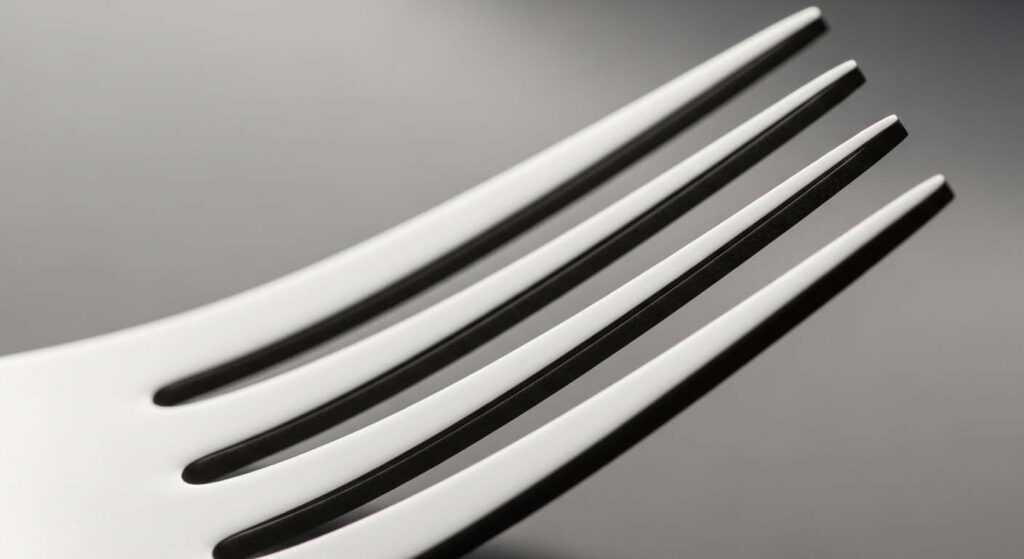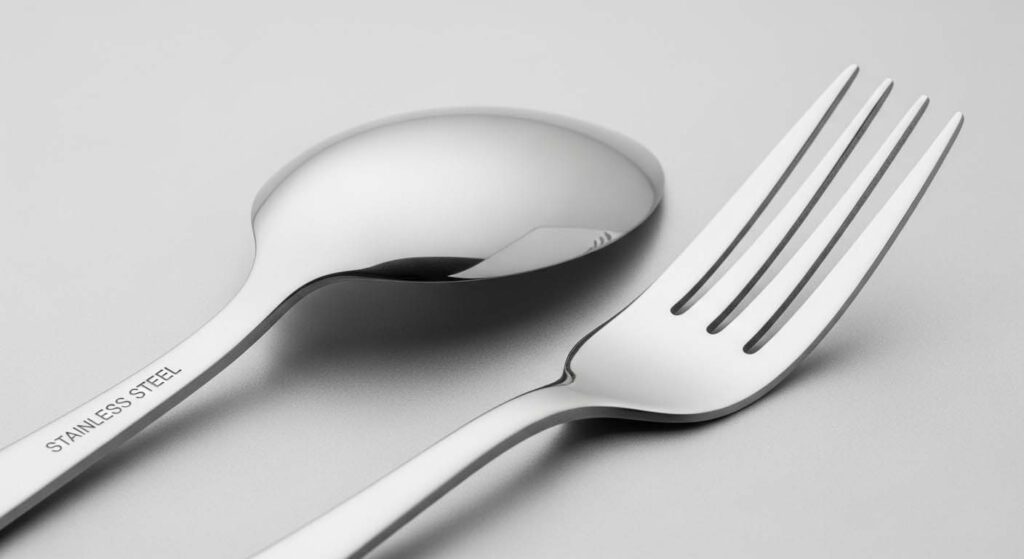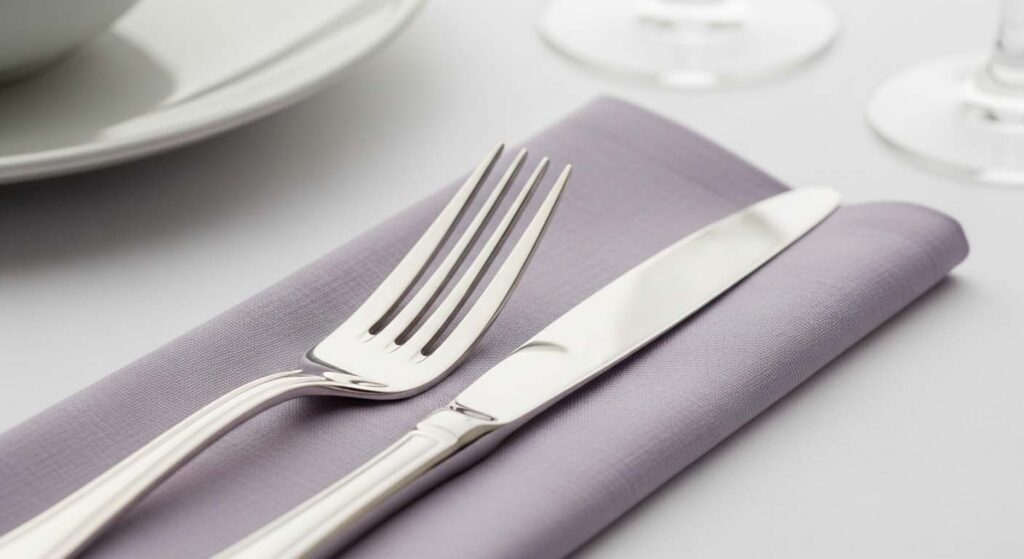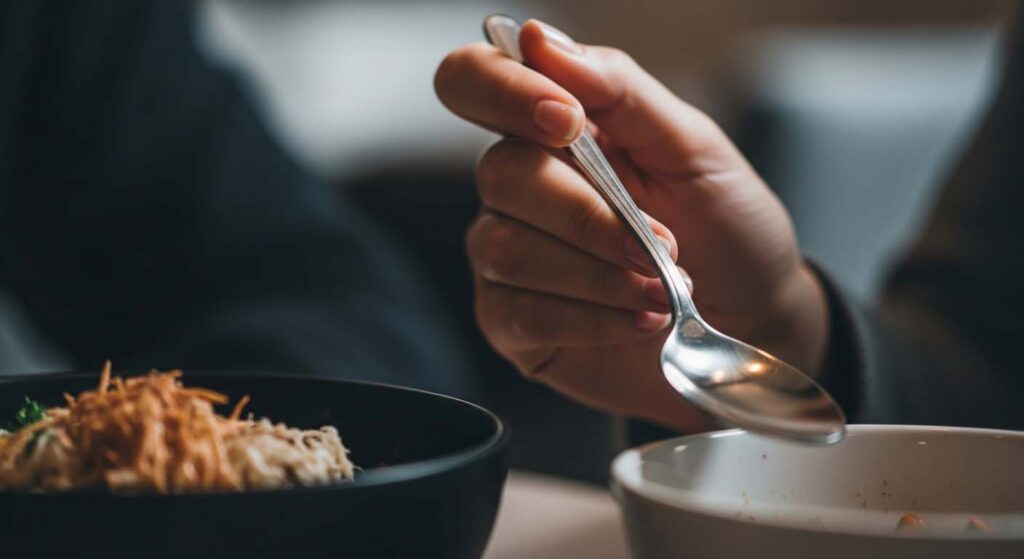How to tell if cutlery is good quality?
You're shopping for new cutlery, and everything looks shiny in the box. But you've been burned before by forks that bend and knives that rust after a few washes.
Good quality cutlery is identifiable by its material, weight, and finish. Look for an "18/10" stamp, feel for a satisfying weight and balance in your hand, and inspect for smooth, polished edges on every surface, especially between the fork tines.

When I walk through a showroom with a professional buyer like Jacky, he can tell the quality of a set in seconds without even looking at the price tag. He's not looking at the fancy patterns; he's evaluating the fundamental markers of good manufacturing. These are things most people never think to look for, but they are the true indicators of whether a set of cutlery is a long-term investment or a future disappointment. The good news is that anyone can learn to spot these signs of quality.
How do you choose high quality cutlery?
In the store or online, every cutlery set is presented perfectly. You don't know what to look for beyond the general design, making it a guessing game you can't afford to lose.
Choose high-quality cutlery by physically engaging with it. Check for an 18/10 stamp, feel its substantial weight and balance in your hand, and visually inspect for a flawless finish, especially the smoothness of the fork tines and spoon edges.

When you pick up a piece of cutlery, it should speak to you through touch and feel. I always tell my clients to perform two simple tests: the "Hand Test" and the "Visual Inspection." This is exactly what a seasoned pro like Jacky does.
The "Hand Test"
Pick up a fork or spoon. Don't just hold it, but feel it. Does it have some heft to it, or does it feel light and flimsy? A good piece of cutlery has substance. More importantly, it should feel balanced. The weight shouldn't be all in the handle or all at the front; it should rest comfortably in your hand, feeling like a natural extension of it. The tines of the fork should feel strong and rigid, not weak or easy to bend. The edges of the handle should be smooth and rounded, not sharp or squared-off.
The Visual Inspection
Now look closer. The real sign of quality is in the details that cheap manufacturers skip. Look at the spaces between the fork tines. Are they as polished and smooth as the front and back? Or are they rough and dull? Polishing this area is difficult and time-consuming, so it's a huge indicator of careful craftsmanship. Run your finger around the edge of the spoon bowl. It should be perfectly smooth, with no sharp or unfinished feeling. These details separate true quality from mass-market mediocrity.
What is good quality cutlery made of?
You see confusing numbers like 18/10 and 18/0 on cutlery descriptions. You know they must mean something about quality, but you're not sure which one is better or why.
The best quality cutlery is made from 18/10 stainless steel. This alloy contains 18% chromium for rust prevention and 10% nickel for superior corrosion resistance and a brilliant, silver-like shine. It is the industry standard for premium flatware.

The material is the heart of the cutlery. All the beautiful design and polishing in the world can't make up for a poor-quality base metal. In the cutlery industry, these numbers are everything, and they make the difference between a set that lasts a lifetime and one that spots with rust in a year.
Here’s a simple breakdown of what these numbers mean:
| Grade | Composition | Key Benefit | Use Case |
|---|---|---|---|
| 18/101 | 18% Chromium, 10% Nickel | Highest rust & acid resistance, brightest shine. | Premium forks and spoons. The gold standard. |
| 18/82 | 18% Chromium, 8% Nickel | Very high resistance, great shine. | Excellent quality, nearly identical to 18/10. |
| 18/03 | 18% Chromium, 0% Nickel | Good rust resistance, but vulnerable to corrosion. | Budget-friendly flatware. Lacks the shine and protection of nickel. |
| 13/04 | 13% Chromium, 0% Nickel | Decent rust resistance, very hard steel. | Used specifically for knife blades to hold a sharp edge. |
The chromium provides the basic "stain-less" property, protecting the steel from rust. But it's the nickel that elevates it to premium quality. The nickel provides an extra defense against corrosion from everyday acids and salts in food. It's also what gives 18/10 cutlery its beautiful, warm luster.
What is a good cutlery grade?
You're trying to make a smart purchase and want to select the "best" grade. But you're unsure if one grade is good for everything, or if different pieces need different grades.
The best grade for forks and spoons is 18/10 stainless steel. For knives, a high-quality manufacturer will often use a different grade, like 13/0, for the blade because its harder composition allows for a sharper, more durable cutting edge.

Thinking in terms of different grades for different pieces is a sign of a sophisticated buyer. Not all pieces in a set should necessarily be the same material, and a good manufacturer knows this. The ideal properties for a spoon are different from the ideal properties for a knife.
The nickel in 18/10 steel that provides that beautiful shine and corrosion protection also makes the metal slightly softer than steel without nickel. For a fork or a spoon, this is perfectly fine. However, for a knife blade, you need a harder steel that can be honed to a fine, sharp edge and, most importantly, hold that edge through repeated use. This is where a grade like 13/0 (sometimes called 420 stainless) comes in. It contains no nickel, making it very hard and perfect for blades. When you see a set where the forks and spoons are a shiny 18/10 and the knife uses a different, specific steel for the blade, it's not a sign of cost-cutting. It’s a sign of thoughtful, quality engineering. This is a detail professional buyers always look for.
Are quality cutlery light or heavy?
You pick up one fork and it feels solid and heavy. You pick up another and it's much lighter. You assume the heavy one is better quality, but then wonder if it will feel clumsy to use.
Quality cutlery has a satisfying weight that feels balanced, not just heavy. While very light cutlery is a sign of poor quality, the best flatware feels substantial and well-distributed in your hand, making it a comfortable extension of you.

Weight is one of the most immediate indicators of quality, but heaviness for its own sake is not the goal. The real goal is substance and balance.
If a piece of cutlery feels feather-light and flimsy, it's a red flag. It means the manufacturer used a thin gauge of steel to save money, and it will likely bend the first time you try to scoop hard ice cream. On the other hand, some cheap cutlery is just heavy and clunky, with all the weight in the handle, making it feel awkward to use.
High-quality cutlery, especially if it is "forged5" (shaped from a solid bar of hot steel) instead of "stamped" (cut from a sheet), has a significant weight. But that weight is intelligently distributed along the entire piece. When you hold it, it feels balanced and ergonomic. It gives you a sense of confidence and control. This satisfying, balanced feel is perhaps the most defining characteristic of a premium product and something that can only be appreciated by picking it up.
Conclusion
True cutlery quality is found in the details: the 18/10 steel grade, the satisfying weight and balance in your hand, and the perfection of the polished finish. Look for these signs.
-
Explore this link to understand why 18/10 stainless steel is considered the gold standard for durability and shine in kitchenware. ↩
-
Explore this link to understand why 18/8 is a top choice for quality flatware, balancing durability and shine. ↩
-
Explore this link to understand the pros and cons of 18/0 stainless steel, helping you make informed choices for your flatware. ↩
-
Explore this link to understand the unique properties and applications of 13/0 stainless steel, especially in knife manufacturing. ↩
-
Explore this link to understand why forged cutlery offers superior balance and durability, enhancing your cooking experience. ↩
